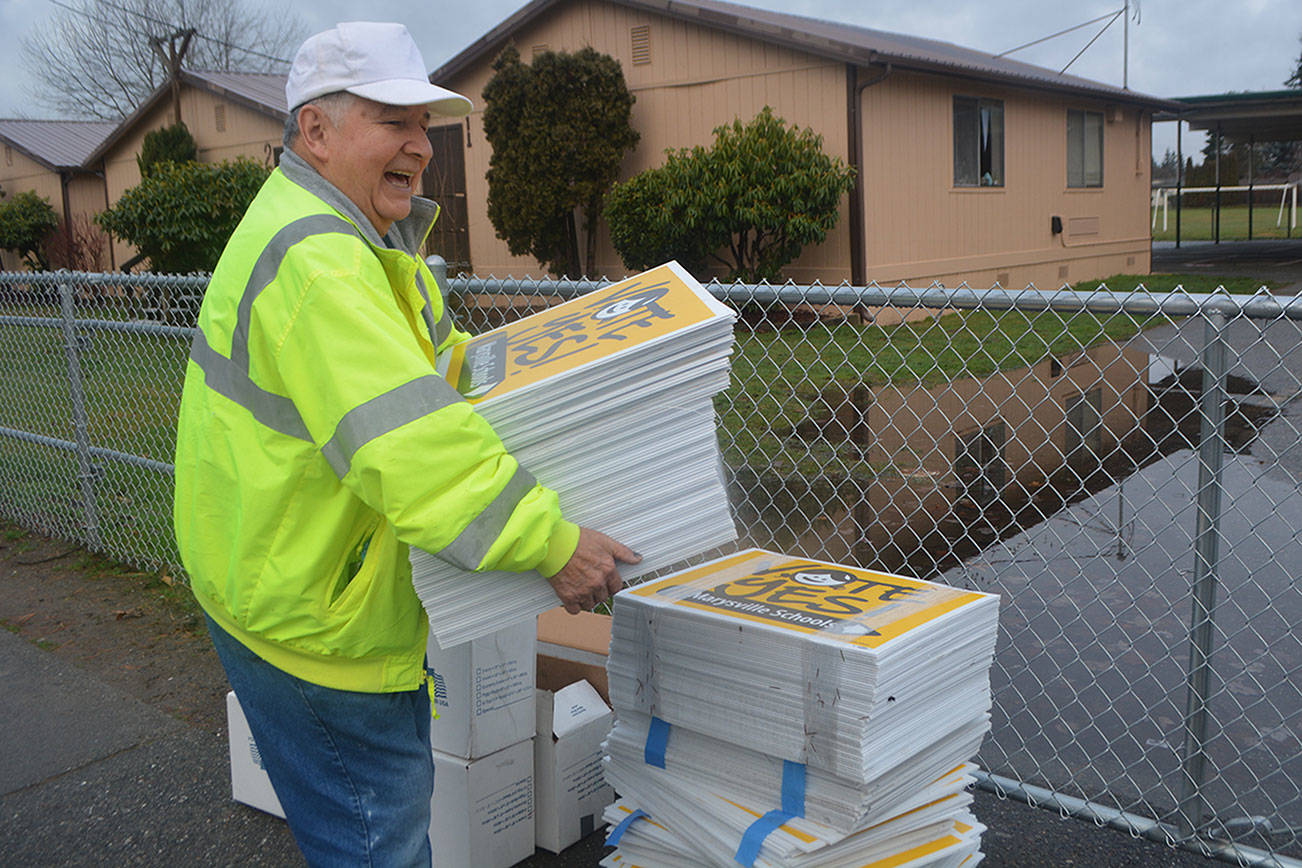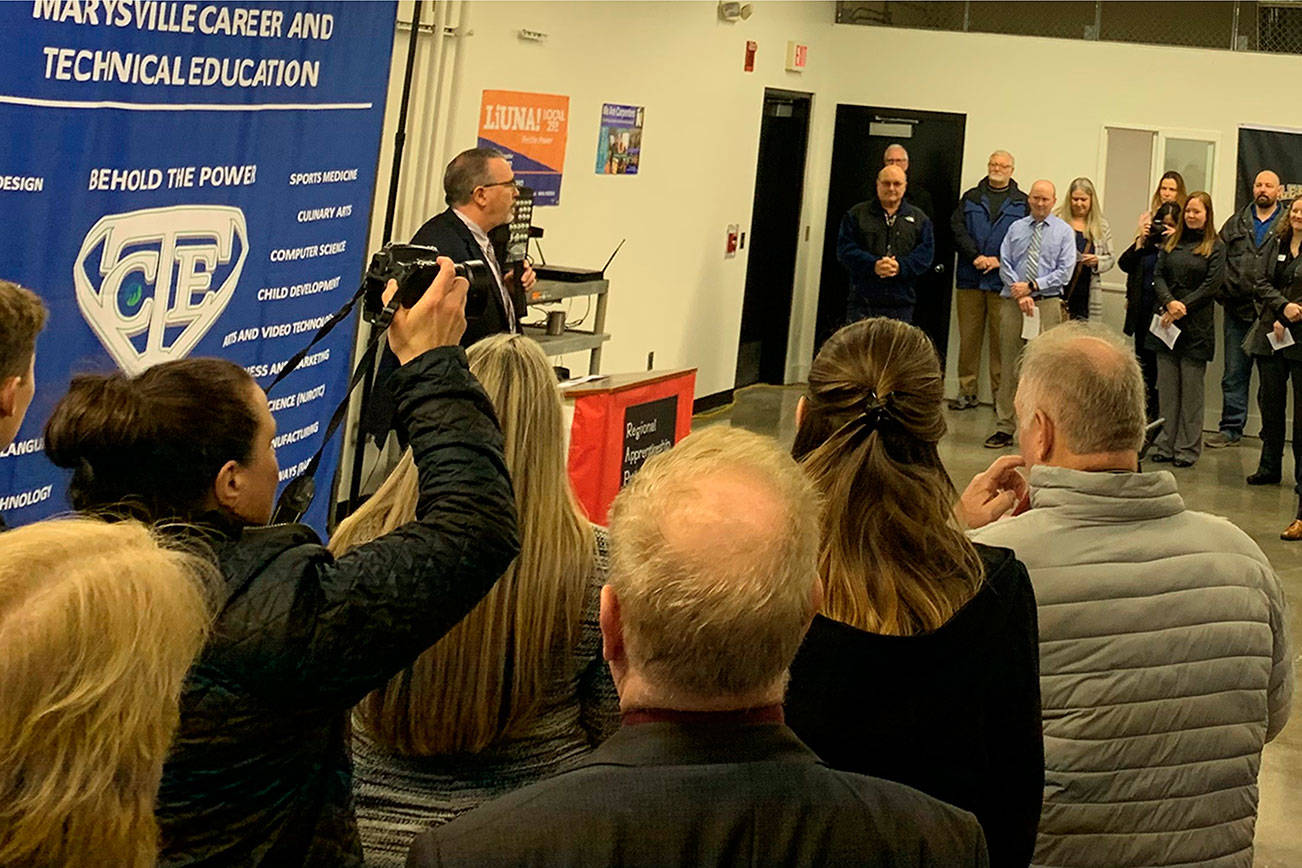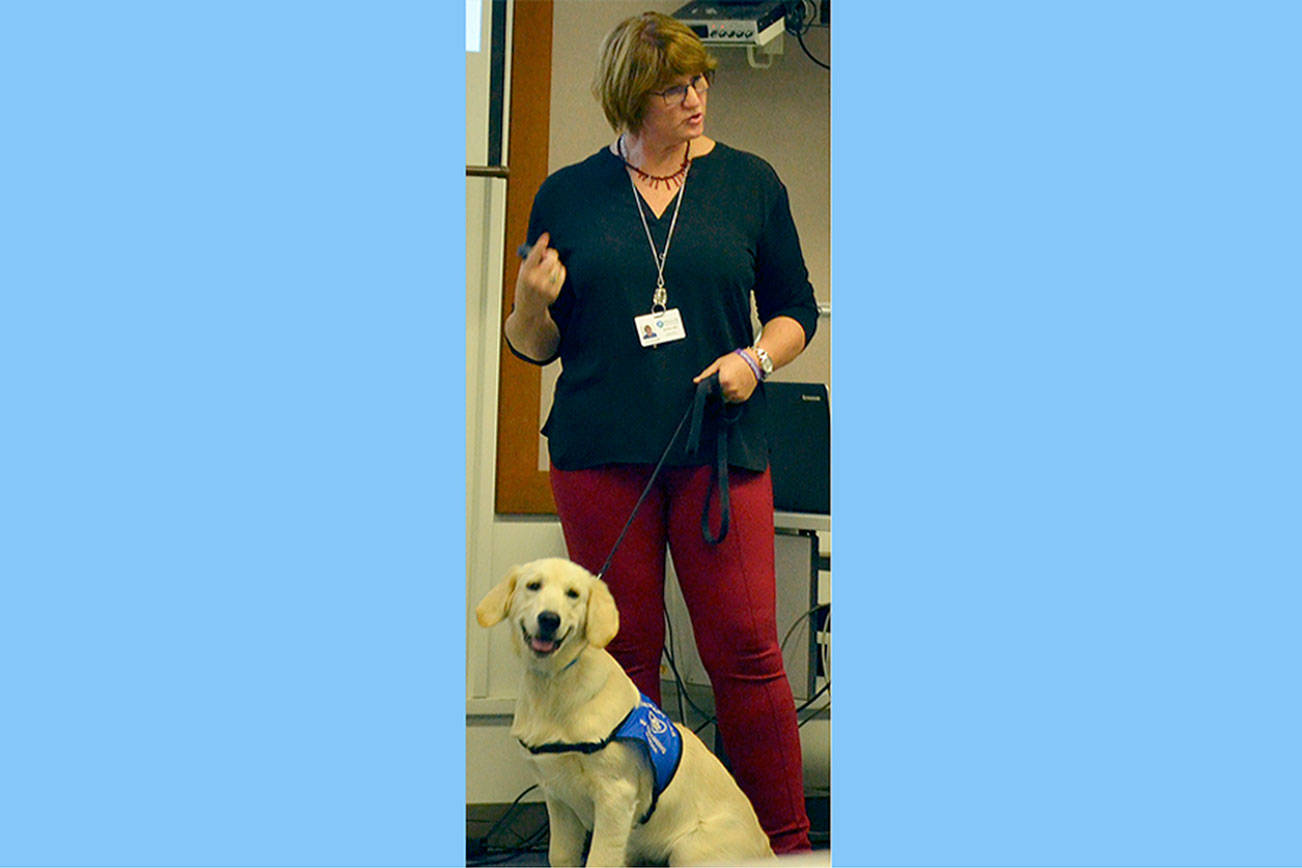MARYSVILLE – Jason Thompson is in the hot seat.
As acting Marysville School District superintendent, he plans to decide by early June what Marysville-Pilchuck and Marysville Getchell high schools will look like next year.
His recommendation will go to the school board.
He will be using information provided by consultant Strategies 360, which has been collecting information in various ways from the community for about a year.
Thompson’s job is made tougher by some conflicting information that some might consider skewed.
For example, the survey shows overwhelmingly that the community wants schools it can be proud of. Yet it voted down bonds a few years ago that would have fixed that.
Another conflict is that 32 percent of participants in one part of the survey has connections to MG, while 19 percent connect with M-P. That could play a huge part in the survey results that show twice as many respondents support school choice, even though teachers voted the opposite way.
Also, it shows only about 50 percent care about saving money on transportation of students.
As for small learning communities, those connected with MG voted 57 percent to keep them, while overall the vote was 35 percent. Lesley Rogers of Strategies 360 said overall this community is “empathetic. It really cares” about schools. “That’s not the case” in all towns, she added.
She said residents value education even though only one of four respondents had kids in schools.
In all the different ways information was collected – surveys, phone calls, meetings, etc. – three things kept coming up that could “make the biggest difference quicker,” Rogers said: Improving the culture, physical and emotional safety, and better communications.
Rogers said they kept hearing that folks want “x, y and z. The district already was doing x, y and z.” So the key is to inform the public and have a process so success can be measured, she added.
School board member Vanessa Edwards said of all the ways information was collected, which did Rogers think was the most accurate. Rogers said the phone survey had a valid sample size, but that all the data should be used.
School board member Chris Nation pointed out that not many hispanics took part, even though they represent 20 percent of the student population. He blamed Stategies 360 for creating an obstacle by not having materials translated in Spanish for the surveys.
Rogers said they tried to include hispanics but were unsuccessful. She added that a phone survey won’t likely work with that population. Thompson said the district is still trying to get that input, hinting that personal contact might be a better route.
Other topics that kept coming up in the surveys were:
•The public wants to be engaged in school decisions early and often.
•They want equity in the high schools in course offerings, extracurricular activities and sports programs.
•They want mutual respect, career awareness and cultural competence.
•They want more highly capable programs along with better behavior, especially in middle schools.
Rogers said a key problem between the public and MSD is trust and follow through. She suggested a fourth vision, “Honor our Commitments,” be added to “Engage, Inspire, Prepare.” She said the community wants a decision about the high schools sooner than later on if there will be choice and SLC’s. They want the decision explained thoroughly. “And they want the district to keep their promise that kids will be allowed to stay in their high school until they graduate,” she said.
For more, go to www.msd.org and “Dream Big 2.0”
AVID party
Prior to the meeting, school leaders met with graduating participants in the Advancement Via Individual Determination program. School board member Pete Lundberg admitted when the district first started AVID he wasn’t sure it would work, but he was wrong.
“There are a whole lot of kids who didn’t know how to get there,” he said of students who didn’t realize their potential to go to college.
“Students who five years ago didn’t even dream of college are now getting scholarships,” he said. “It helps kids better themselves. Now they know how to be successful.”
Successful audit
Lead auditor Mathew Heist said because problems were few the audit would cost $4,000 less than planned. He praised the district for fixing issues with ASB budgeting.
Another auditor, Courtney Amonsen, said it also was a clean opinion when it comes to federal programs such as Title 1 and child nutrition.
“There were no problems with the process, which is great,” she said.
The only issue they noted concerned the lack of bids when using education co-ops that save districts money by buying in bulk. “There still is a requirement for competitive bidding,” Heist said. “It’s not just a problem here, but throughout the state.”
Any purchase over $40,000 is supposed to get three bids. He said auditors couldn’t tell if the low bid was awarded.
Also, contracts with co-ops were not properly maintained by the district.
Other school board news
•Nation said after the recent school shooting in Texas that the district needs to make sure kids are prepared for all types of emergencies, including earthquakes. “Kids need to respect our drills. They could save their lives,” he said.
•Ladainian Kicking Woman of Quil Ceda Elementary and Savannah Black Tomahawk of Totem Middle School were named Indian Education Students of the Month. Ladainian was honored for his leadership, while Savannah her respect for school and culture.
•Damaged or lost Chromebooks, out-of-date software and old school buses were removed from the district’s inventory.







